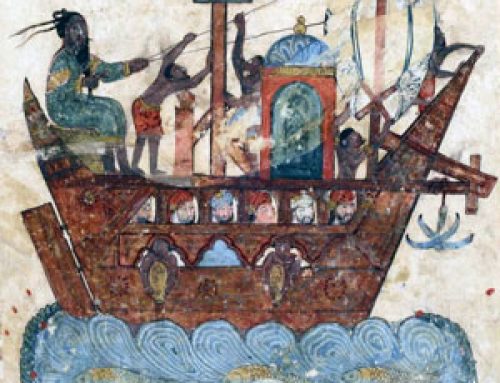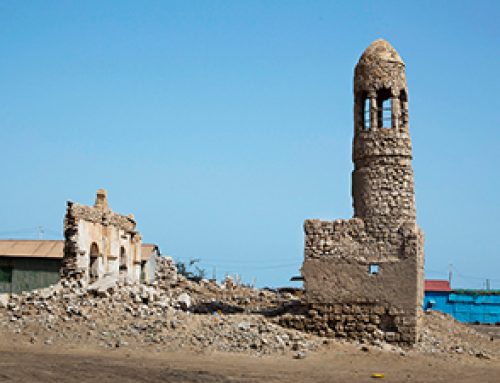
A baby with malaria (from World Health Organization) – Malaria history
How do you get malaria?
You catch malaria by being bitten by a mosquito that has malaria parasites living inside it. (Female mosquitoes bite people to get blood. That gives them enough energy to make baby mosquitoes.)
Why do mosquitoes bite?
All about insects
Ancient diseases and doctors
What does malaria do to you?
When the mosquito bites you, the malaria parasites go from the mosquito’s mouth into your blood. Then they reproduce and make lots more parasites inside your body. If you have malaria, you start to get fevers. You feel first very hot and then very cold. About one out of every ten people who caught malaria in antiquity died of it, especially if they were kids.
More about blood

A mosquito on human skin – Malaria history
When did malaria get going?
More people have probably died from malaria over the last several thousand years than from any other disease that you can catch. Malaria parasites probably first began to infect reptiles in West Africa and Central Africa.
What are reptiles?
More about dinosaurs
The Jurassic period
That was at least a hundred and fifty million years ago (150,000,000 BC), in the time of the dinosaurs.
Why did malaria start in Africa?
Africa was warm and wet. So there were a lot of mosquitoes there. When mammals came along, the mosquitoes bit them too, and they also got malaria. But based on genetic evidence, people probably didn’t start getting malaria until about 8000 BC. That’s when people in Africa started to live in big enough groups for the disease to spread easily.
Stone Age Egypt
Early Sudan
Early African history
All our Africa articles
Malaria spreads to Asia
From its beginnings in Africa, malaria slowly spread all over Asia and Europe. Sumerian and Egyptian doctors from about 2000-1500 BC described fevers that sound like malaria. DNA evidence from Egyptian mummies also shows that they had malaria around 1500 BC.
Indian medicine and doctors
In India, people seem to have been catching malaria by 1000 BC. By 800 BC the Indian surgeon Susruta knew that you caught malaria from insect bites. Malaria was common in China by 1 AD or so, when it was described in a Chinese medical text, the Neijing.
The first treatment for malaria
By the 300s AD, the Chinese doctor Ge Hong suggested a real treatment for malaria – the qinghao plant, which is still one of our main medicines against malaria.
Chinese medicine and doctors
When did malaria reach Europe?
Malaria seems to have infected ancient Italy and Greece during the Hellenistic period (about 500-1 BC). It may have killed Alexander the Great. It didn’t reach northern Europe until the Middle Ages, about 1000-1500 AD.
More about Alexander the Great
Rice and rice farming
The Holy Roman Emperor Otto II was an early victim. Europeans, however, did not immediately understand either the cause or the cure. Rice farming, in both China and Europe, turned out to be an excellent way to spread malaria, because of the standing water in the rice paddies. This led to big arguments between rice farmers and public health officials who were trying to stop malaria from spreading.
Malaria in the Americas

Cinchona bark – where quinine comes from
When European invaders came to North America and South America in the 1500s AD, some of them had malaria, and American mosquitoes caught the disease by biting these sick people.
Malaria and African-Americans
Then in the 1700s when British slave traders forced many African people to come to North America and South America as slaves, they also brought malaria with them.
African-American slavery
What was smallpox?
What is measles?
Along with smallpox and measles, malaria was one of the diseases that killed most of the people who lived in North America – the Chinook, the Iroquois, the Cherokee, and other groups. But in Peru, Quechua doctors cured malaria with quinine made from the bark of the cinchona tree.
Incas and Peru
Big rice fields in the southern colonies helped mosquitoes to breed. Gradually many places in both North and South America were infested with malaria, and by the 1750s many people in the Americas caught it. By 1850 there was malaria all over both North and South America. If you’ve read the Little House books, malaria is what Laura and Mary had when they had “fever and ague”, and quinine is the bitter medicine the African-American doctor gave the girls. We still use quinine today to cure malaria.
Malaria becomes less common
By the middle of the 1900s, malaria became less common in the northern half of the world (North America, Europe, Russia and northern China). This was mainly because gasoline engines in tractors and farm machinery did most of the farm work. So most people did not live or work on farms anymore. They lived in cities instead.
Malaria in the Global South
But in the southern half of the world (Central and South America, Africa, India, and south-east Asia), malaria is still killing more than a million people every year, most of them children.
More about global warming
Global warming caused by people burning oil (to run those tractors!) is helping mosquitoes to spread malaria to places where it wasn’t a problem before, so we can expect malaria to be even more of a problem in the future.
Smallpox
Bubonic plague (with pictures)
Measles
Bibliography and further reading about malaria:




